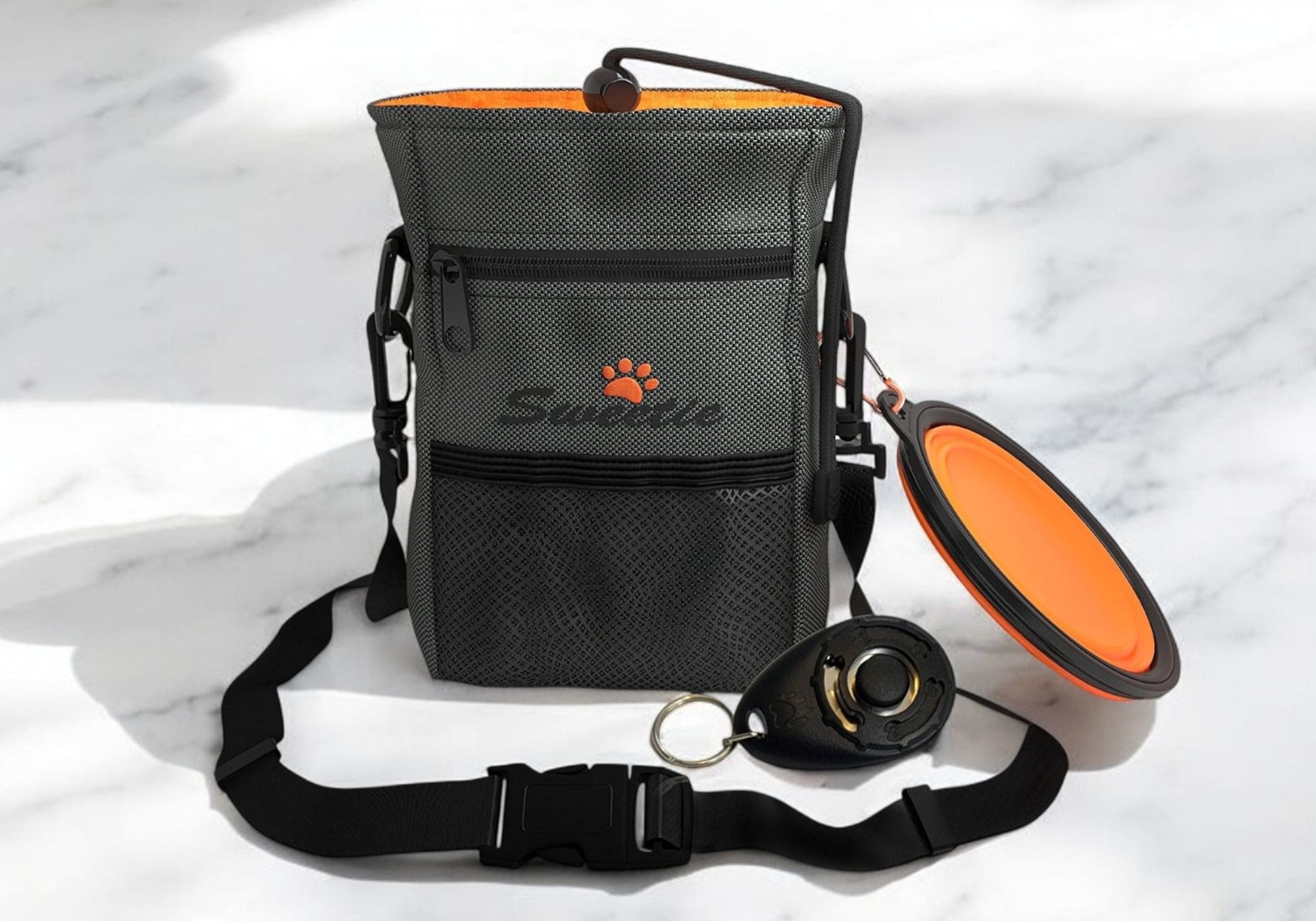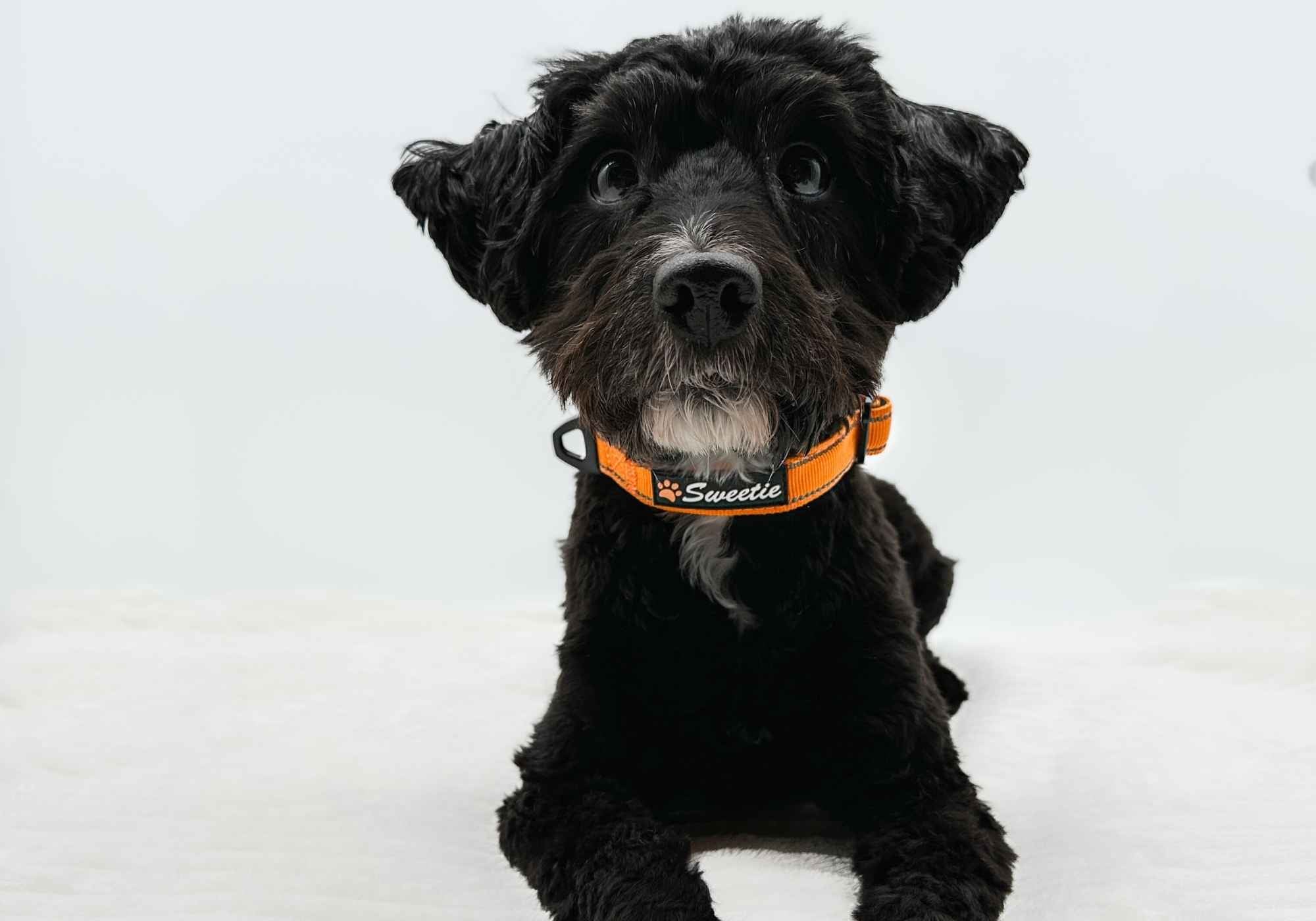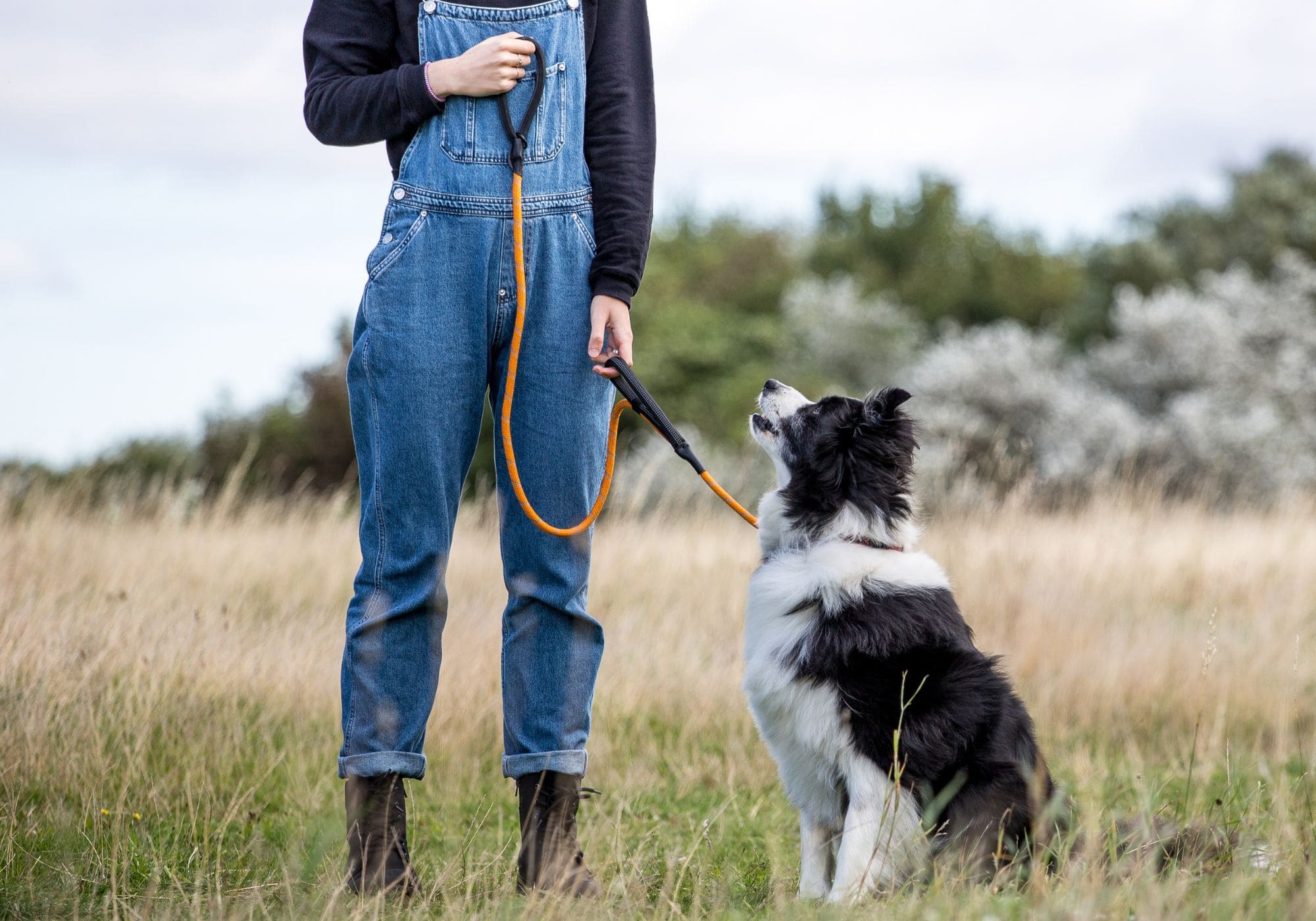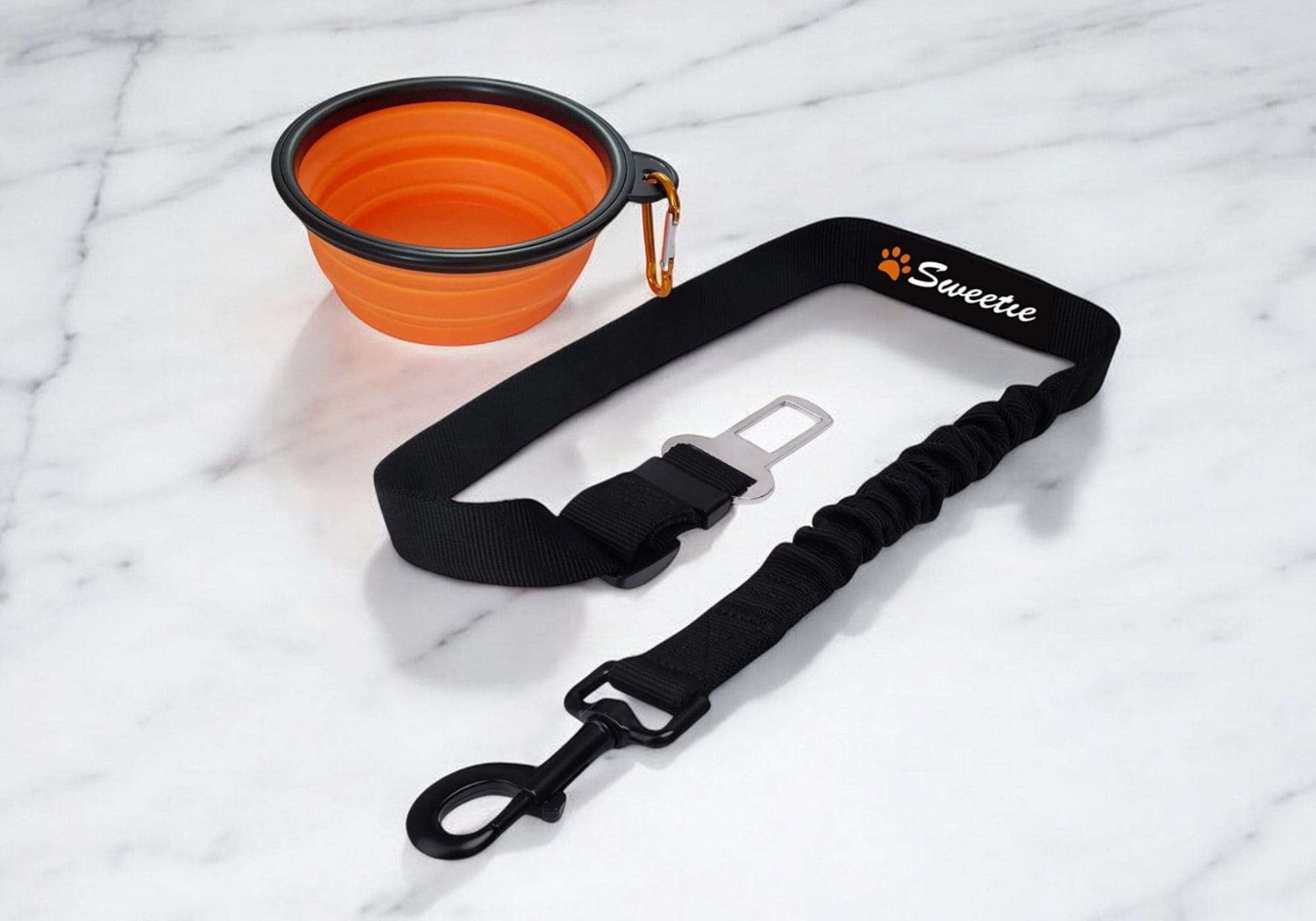When Can Puppies Climb Stairs Safely?
Dogs and stairs together are bad news. Whether you have a long staircase joining upstairs or a couple of steps from the porch down to the garden, they are an accident waiting to happen for an excited but still young and wobbly-on-their-feet puppy rushing down.
So, when can puppies climb stairs safely? In general, puppies can climb stairs safely once they reach around 12 to 16 weeks of age. But that’s only the short answer. There is more about puppies and stairs—the risks of puppies going up and down the stairs, some puppies not being big enough to navigate the stairs safely, and how to make stairs safe for puppies. Keep reading, and don’t forget to take notes on keeping your puppy safe while navigating the staircase.
Are Puppies Allowed to Climb Stairs?
Puppies can go up and down the stairs, but that doesn’t necessarily mean that you should allow your puppies free reign of the staircase or even encourage it.
What Are the Risks of Puppies Going Up and Down the Stairs?

If given a chance, eager and excitable puppies will explore the stairs one step at a time until they pass out from exhaustion. With that comes the obvious risk of slipping and falling, which can cause serious physical injuries in puppies while climbing the stairs, but other health risks are also involved.
ArthritisClimbing the staircase up and down is physically demanding for growing puppies. It can put too much strain on their hip and joints. And overworked joints in puppies from constantly going up and down the stairs put them at a greater risk of joint pain and stiffness and developing arthritis as they grow older.
Hip dysplasia
Repeatedly climbing stairs gradually injures your puppy’s joints, which may lead to hip dysplasia later in life for those breeds susceptible to the condition, which can plague them from puppyhood to adulthood.
Dogs breeds most prone to hip dysplasia are Labradors, Leonbergers, Irish Wolfhounds, and other larger dogs like Great Danes, Golden Retrievers, St. Bernards, Mastiffs, and Rottweilers. A study found that certain large dog breeds are at a higher risk of hip dysplasia when climbing the stairs from birth to 12 months of age.
Growth plate injuries
A wobbly and still clumsy puppy navigating the stairs is a recipe for disaster. It can cause permanent injuries to the growth plates in the legs. Until the growth plates close, which happens when they reach adulthood, they are soft and prone to injury.
Just a slight bend or twist in the wrong way due to any physical injury can cause damage to the legs. It may be a mild injury that causes bruising or a severe one fracturing the growth plates, causing growth abnormality like a shortened limb.
How Can You Prevent Puppies from Climbing the Stairs?
Until your puppy is old enough to traverse the stairs safely, you should ‘dog-proof’ the stairs, blocking your puppy’s access to them. Perhaps the most effective way to do so is by putting a stair gate or a baby gate across the top and the bottom of the staircase. Just make sure that the gate is high enough that your puppy won’t get tempted to climb over it or that it’s secured enough that it can't push the gate open.
If you don’t have a stair gate, whatever object or furniture you can block the way will do as long as your puppy can’t climb over them.
So, When Is It Safe for Puppies to Climb Stairs?

In most cases, puppies should be able to climb stairs safely once they are about 12 weeks old. At this age, they have become fully confident in their legs—less to no wobbliness or clumsiness. It means they are less likely to accidentally trip and hurt themselves, though they should still be closely supervised.
But ideally, the most appropriate age for puppies to go traversing the stairs safely on their own is when they become adult dogs. Their bones and muscles will be fully developed by then, and they can climb up and down the stairs without harming themselves. But the exact age for puppies to reach adulthood differs depending on their breed, for example:
- Mini dogs (below 12 pounds in weight as an adult) like Papillons, Chihuahuas, and Affenpinschers typically reach adulthood around nine months old.
- Small dogs (13-25 pounds as an adult) like Boston Terriers, Cavalier Spaniels, and French Bulldogs can reach adulthood at about 12 months old.
- Medium dogs (26-50 pounds as an adult) like Border Collies, Brittany Spaniels, and Retrievers usually reach adulthood at around 14 months old.
- Large dogs (51-75 pounds as an adult) like Afghan Hounds, Airedale Terriers, and Pointers typically reach adulthood at about 18 months old.
- Giant Dogs (76 pounds and above as an adult) like Akitas, Rottweilers, and Neapolitan Mastiffs usually reach adulthood at about 24 months old.
6 Tips to Ensure Your Puppy Climbs the Stairs Safely

Once they are old enough, you can introduce your puppy to the stairs under close supervision. These tips will help your puppy walk up and down the stairs safely.
Make Sure Your Puppy’s Breed Can Climb the Stairs
For puppies, climbing stairs is like climbing a mountain. While the art of scaling them can be taught, some puppies might find it extra difficult to climb stairs. The size of the puppy and the stair height factor in whether it’s safe or not to allow them to access the stairs.
If the stairs are shorter than your puppy’s legs, they can easily go up and down. However, it would be stressful and almost impossible for puppies to climb a stair with a height much taller than them. For instance, breeds like Basset Hounds, Corgis, and Dachshunds have short legs and hefty bodies, highly risking injuries if they freely roam the stairs.
Wait Until the Puppy Is Fully Grown
The best practice to keep your puppy safe while traversing the stairs is to wait until they’re old enough to do so safely. At this stage, your puppy would be fully grown and has developed the functions, skills, and confidence to climb up and down the stairs on their own without any problem, minimizing the chance of injury.
Discourage the Puppy from Playing Up and Down the Stairs
Accidents happen even if your puppy is old enough to climb the stairs without issues. Excited puppies rushing up and down the stairs can easily slip, fall, and tumble. To prevent your puppy from hurting themselves on the staircase, discourage them from playing and running up the stairs.
Boundary Train Your Puppy
In the same way that you train your puppy to stay outside a particular room, you can also teach them not to go up or down the stairs unless you give them permission.
Install a Ramp
Installing a pet ramp is a fantastic solution for your puppy’s safety than going up and down the steps. Pet ramps may be originally designed to help pups get up and down the bed or in and out of cars, but they also make exceptional stair aids for puppies. They reduce the pressure placed on the puppy’s hips and hind legs when climbing up.
However, consider that pet ramps are only suitable for five steps or fewer stairs. Also, ensure the ramp has a non-slip coating to prevent your puppy from sliding back down.
Make Sure the Stairs Is Properly Lit
Climbing up and down poorly-lit stairs is a disaster. A slip or fall would be inevitable. To keep your puppy safely walking up and down the stairs at night, ensure your staircase is properly lit. It could be as simple as leaving a light on.
Make Stairs Safer with Carpeting
Even when puppies are comfortable and confident climbing up and down the stairs, there are still risks of tumbles and falls. These accidents can happen if the stairs are slippery for your puppy, like on waxed and polished hardwood floors. And any resulting injury can have dire consequences.
Consider fixing some carpet or anti-slip padding in case of slippery hardwood stairs. Carpeted stairs will give puppies better footing while climbing up and down the staircase, reducing the risk of slipping.
The Bottom Line
Ideally, it’s smart to keep your puppy from having free access to the stairs until they reach at least 12 months old or until they reach adulthood. Waiting until they are older and fully developed ensures they can go up and down the stairs safely. Puppy-proofing the stairs—installing a ramp or carpeting—also goes a long way in terms of ensuring your puppy’s safety while climbing stairs.






Leave a comment